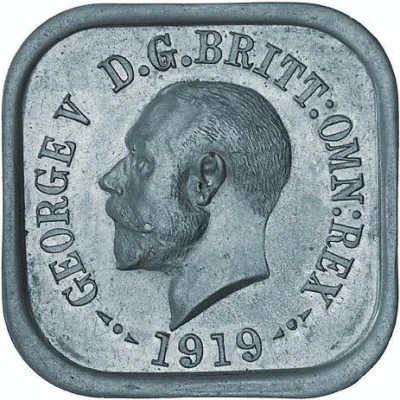


© Museums Victoria
1 Penny - George V Kookaburra Pattern - Type
1919 year| Copper-nickel | 3.88 g | - |
| Issuer | Australia |
|---|---|
| King | George V (1910-1936) |
| Type | Pattern |
| Year | 1919 |
| Value | 1 Penny (1⁄240) |
| Currency | Pound (1788-1966) |
| Composition | Copper-nickel |
| Weight | 3.88 g |
| Size | 18 mm |
| Shape | Square with rounded corners |
| Technique | Milled |
| Orientation | Medal alignment ↑↑ |
| Demonetized | Yes |
| Updated | 2024-10-04 |
| Numista | N#124656 |
|---|---|
| Rarity index | 97% |
Reverse
Similar to type four except for slightly different design of the kookaburra which appears to be slightly thinner. Kookaburra has shorter beak
Script: Latin
Lettering:
AUSTRALIA
ONE
PENNY
Edge
Plain
Comment
Type: M5 / R5Dies prepared by the Royal Mint, London
Between 1919 and 1921 a series of experiments were undertaken for a square coinage in nickel to replace the large bronze penny and halfpenny coins.
Interesting fact
One interesting fact about the 1919 Australian Kookaburra Pattern Penny is that it was designed by artist and sculptor, Edgar Bertram MacKennal. He was also responsible for designing the reverse of the coin, which features a kookaburra perched on a tree branch, surrounded by leaves and berries. The kookaburra is a native Australian bird known for its distinctive call, which sounds like laughter, and is often referred to as the "bushman's clock" because of its habit of calling out at dawn and dusk. The coin's design was meant to showcase Australia's unique wildlife and natural beauty, and it has become a popular collector's item among numismatists and coin enthusiasts.



